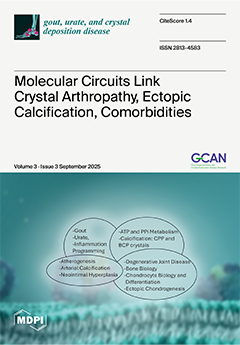Open AccessConference Report
2024 Annual Meeting of the International Network on Ectopic Calcification (INTEC)—Abstract Proceedings
by
M. Leonor Cancela, Ahmed Alouane, Pietro M. Bertelli, Antonio Camacho, Robbe Derudder, Antonella Forlino, Matthew P. Harris, Marta Jacinto, Imre Lengyel, Wolfgang Link, Monzur Murshed, Andreas Pasch, Arun-Kumar Kaliya-Perumal, Daniela Quaglino, Zihan Qin, Yves Sabbagh, Elena Seminari, Marcos M. Villar, Christoph Winkler and Olivier M. Vanakker
Viewed by 537
Abstract
The 3rd Annual Meeting of the International Network on Ectopic Calcification (INTEC) was held in Faro, Portugal on 12–13 September 2024. This hybrid meeting brought together researchers and clinicians focused on the molecular, (patho)physiological, and clinical aspects of ectopic calcification in hereditary and
[...] Read more.
The 3rd Annual Meeting of the International Network on Ectopic Calcification (INTEC) was held in Faro, Portugal on 12–13 September 2024. This hybrid meeting brought together researchers and clinicians focused on the molecular, (patho)physiological, and clinical aspects of ectopic calcification in hereditary and acquired conditions, as well as in aging. The findings presented in this year’s meeting emphasised the complexity of the field, offering new insights into both mechanistic pathways and translational hurdles. The abstracts of this year’s meeting are collected in this conference paper, with permission from the corresponding authors.
Full article
►▼
Show Figures




